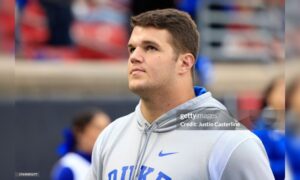While writing about new punter Brad Wing’s chances of becoming the regular punter for the Pittsburgh Steelers, and the comments regarding him made by team general manager Kevin Colbert at the NFL Combine, I also touched on the topic of underclassmen and maturity levels, and I think it’s worth further comment.
With the news that a record number of underclassmen have declared for the 2014 NFL Draft, it makes me wonder how many more players there will be like Brad Wing. Colbert described this class as one of the most talented that he’s ever seen, but also has the potential to be the most immature, with a high level of ‘bust-ability’, thanks to the near-triple-digit influx of underclassmen involved.
I find this quite interesting, because it could change the dynamics about this whole system works, both on the college and professional levels.
In a sense, I see this upcoming draft class as an experiment examining the global viability of college players declaring early for the draft and whether such a rise could correlate with an increase in disciplinary and behavioral concerns as the result of underclassmen coming in less prepared to work in a professional environment.
Related to the issue of emotional maturity and working in a professional environment is, put quite simply, job performance. As Colbert mentioned, dealing with younger players, one could argue, brings quite a bit of unknowns into the equation, making it more difficult to determine beforehand if a particular player will be able to pan out.
On the surface, Colbert described this draft as arguably the most talented in the 30 years that he has been scouting draft classes. True evaluation, however, comes down the road, and we must see how well the younger players in particular are able to adjust from the college ranks to the NFL from a physical, mental, emotional, and economic standpoint.
Make no mistake, there’s certainly no mystical age at which somebody suddenly becomes ‘mature’, and if there were, it most definitely wouldn’t be 22 or 23. It would be foolish, therefore, to explicitly equate an age discrepancy of a year or two in early adulthood to the difference between immaturity and responsibility.
Maturity is a wholly unpredictable development that varies wildly from person to person. Kelvin Benjamin, for example, is an underclassman, yet is already 23-years-old, and credits this past year a great deal to his growing up and taking a greater sense of responsibility for the future of his career.
The issue, then, is not on the individual level, of course. The Steelers themselves have arguably been successful when selecting underclassmen recently, even at the high end of the draft, perhaps most notably with Le’Veon Bell and Maurkice Pouncey. David DeCastro was also an underclassman coming out, and certainly appears mature well beyond his years coming out of Stanford University, bringing a no-nonsense attitude to his work environment.
Therefore, the issue—if it’s appropriate to call it an issue, which it may well not be—is simply the scale at which the increase in underclassmen declaring for the draft is taking place. Nearly 100 players with college eligibility remaining have declared for this draft. Certainly many of them will be forced to try their luck as undrafted free agents.
How this young subset of the 2014 draft class adapts to the professional rigors of its new working environment could be a litmus test, both for future draftees and for the teams looking to draft them. If there is an inordinate amount of issues involved with these players, then teams could shy away from drafting them in the future, which would force younger players and their agents and families to reconsider staying in school for another year.
On the other hand, if they prove up to the task, it will only further motivate the most talented of the young student-athletes to enter the professional ranks as early as possible. Meanwhile, as the incentives to declare early increase, so too will the draft process and the vetting players go through evolve, coaching them into a professional mindset.
We see the beginnings of this already, with players working more on team interviews and attempting to be more responsible, but I believe this will continue to be an increasing focal point in the process of preparing potential draftees for the next stage of their football careers, and their lives. As the sports world continues to increasingly intermingle with the everyday world, it’s only becoming more and more important to know how to conduct oneself.







